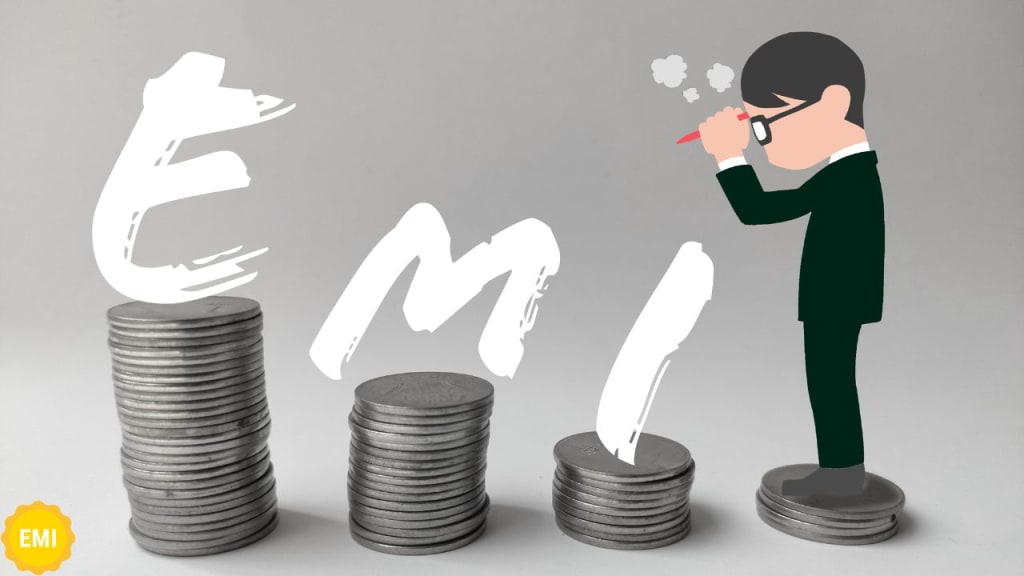Understanding and Optimising Business Loan EMI for Financial Success
Introduction

As a financial advisor with over a decade of experience in the banking sector, I've seen countless entrepreneurs struggle with managing their business loan EMIs (Equated Monthly Instalments). In today's competitive market, securing a business loan is often the first step towards growth and expansion. However, the real challenge lies in optimizing your EMI payments to ensure long-term financial stability. In this comprehensive guide, we'll delve into the intricacies of business loan EMIs, explore strategies to optimize them, and pave the way for your financial success.
What is a Business Loan EMI?
An EMI, or Equated Monthly Installment, is the fixed amount you pay each month towards your business loan. It comprises both the principal and the interest components. Understanding your EMI is crucial because it directly impacts your cash flow and, consequently, your business operations.
Check Your Business Loan EMI Now
Factors Affecting Your EMI Several factors influence your EMI:
- Loan amount: The more you borrow, the higher your EMI.
- Interest rate: Higher rates lead to higher EMIs.
- Loan tenure: Longer tenures can lower your EMI but increase total interest paid.
- Type of interest (fixed vs floating): Floating rates can cause EMI fluctuations.
Calculating Your Business Loan EMI
The EMI Formula The EMI is calculated using the formula: $$ EMI = P \times \frac{r \times (1+r)^n}{(1+r)^n - 1} $$ Where:
P is the principal loan amount
r is the monthly interest rate (annual rate ÷ 12)
n is the total number of monthly installments
Using EMI Calculators Most banks and financial websites offer EMI calculators. These tools simplify the process, allowing you to input your loan details and instantly see your EMI. They're invaluable for comparing different loan scenarios.
Strategies to Optimize Your Business Loan EMI
Improve Your Credit Score A higher credit score can secure lower interest rates, reducing your EMI. Maintain a good credit history by paying bills on time and keeping credit utilization low.
Choose the Right Loan Tenure Shorter tenures mean higher EMIs but less interest paid overall. Longer tenures lower EMIs but increase total interest. Find the sweet spot that balances manageable EMIs with acceptable total costs.
Make a Larger Down Payment A larger down payment reduces the principal, directly lowering your EMI. It also demonstrates financial stability to lenders, potentially leading to better terms.
Opt for a Balloon Payment Structure Some lenders offer balloon payment options, where you pay smaller EMIs initially and a larger sum at the end. This can be beneficial if you expect increased future revenues.
Consider a Step-up EMI Plan In this plan, your EMI increases gradually over time. It's ideal for startups or businesses expecting revenue growth, as it aligns EMIs with projected cash flows.
Refinance Your Loan If market rates drop or your credit improves, refinancing can lower your EMI. However, consider refinancing costs like processing fees and prepayment penalties.
The Impact of EMI on Cash Flow
Cash Flow Forecasting Accurate cash flow forecasts are vital. They help you plan for EMIs and other expenses, ensuring you don't overcommit. Use tools like Excel or specialized software for this.
Emergency Fund for EMIs Maintain an emergency fund covering 3-6 months of EMIs. This buffer protects you during lean periods, preventing defaults that could harm your credit.
Tax Implications of Business Loan EMIs
Interest Deduction The interest portion of your EMI is typically tax-deductible. This reduces your taxable income, lowering your tax liability. Keep meticulous records for tax filings.
Depreciation on Assets If your loan financed fixed assets like machinery, you may claim depreciation. This further reduces taxable income, indirectly helping manage EMIs.
Common Mistakes in Managing Business Loan EMIs
Overleveraging Don't borrow more than necessary. Higher loans mean higher EMIs, straining your cash flow. Always borrow based on realistic revenue projections.
Ignoring the Fine Print Loan agreements can have hidden costs like processing fees or prepayment penalties. These can increase your overall loan cost. Read and understand every clause.
Not Reviewing Loan Terms Regularly Market conditions and your business needs change. Regularly review your loan terms to see if refinancing or prepayment could save money.
Success Stories:
Businesses that Optimised Their EMIs 7.1 Case Study: Tech Startup Turnaround A tech startup I advised was struggling with high EMIs. We refinanced their loan, reducing EMIs by 20%. This freed up cash for marketing, leading to a 50% revenue increase within a year.
Case Study:
Manufacturing Firm's Strategic Planning A manufacturing client opted for a step-up EMI plan. Their initial lower EMIs allowed investment in automation. As EMIs increased, their enhanced productivity easily covered the higher payments.
The Future of Business Loans and EMIs
Digital Lending Platforms Fintech is revolutionizing business lending. Digital platforms offer faster approvals and more flexible EMI options. Stay informed about these developments.
AI-driven Loan Customisation AI algorithms are beginning to tailor loan terms, including EMIs, to individual business profiles. This personalisation could make EMI optimisation even more effective.
Conclusion:
Optimizing your business loan EMI isn't just about lowering payments; it's about aligning them with your business's financial rhythm. By understanding EMIs, employing smart strategies, and avoiding common pitfalls, you can transform your loan from a burden into a powerful growth tool. Remember, in the dance of business finance, your EMI is your partner. Lead wisely, and financial success will follow.
FAQs:
Q: Can I pay extra towards my business loan EMI to reduce the loan term?
A: Yes, most lenders allow prepayments. This reduces your principal faster, cutting your loan term and total interest. However, check for prepayment penalties in your loan agreement.
Q: How does a variable interest rate affect my business loan EMI?
A: With variable rates, your EMI can change based on market conditions. If rates rise, your EMI increases. Some lenders adjust the loan term instead of the EMI, so clarify this with your lender.
Q: Is it better to have a longer loan tenure to keep EMIs low?
A: It depends on your cash flow. Lower EMIs from longer tenures can help short-term cash flow but cost more in interest over time. Balance this with your business's growth plans and projected revenues.
Q: Can I negotiate my business loan EMI with the lender?
A: Yes, especially if your business's financial health has improved. Lenders may renegotiate terms to retain good clients. Present your improved financials, growth plans, and perfect repayment history during negotiations.
Q: How do economic conditions like recessions impact my ability to pay EMIs?
A: Recessions can reduce revenues, making EMI payments challenging. That's why an emergency fund is crucial. Also, some lenders offer EMI holidays or restructuring during economic downturns. Stay in communication with your lender if you face difficulties.
About the Creator
Shubham jain
Hi, I am Shubham jain. I am SEO Expert and blogger. I am work as a SEO Intern in OneNdf.
Enjoyed the story? Support the Creator.
Subscribe for free to receive all their stories in your feed. You could also pledge your support or give them a one-off tip, letting them know you appreciate their work.





Comments
There are no comments for this story
Be the first to respond and start the conversation.